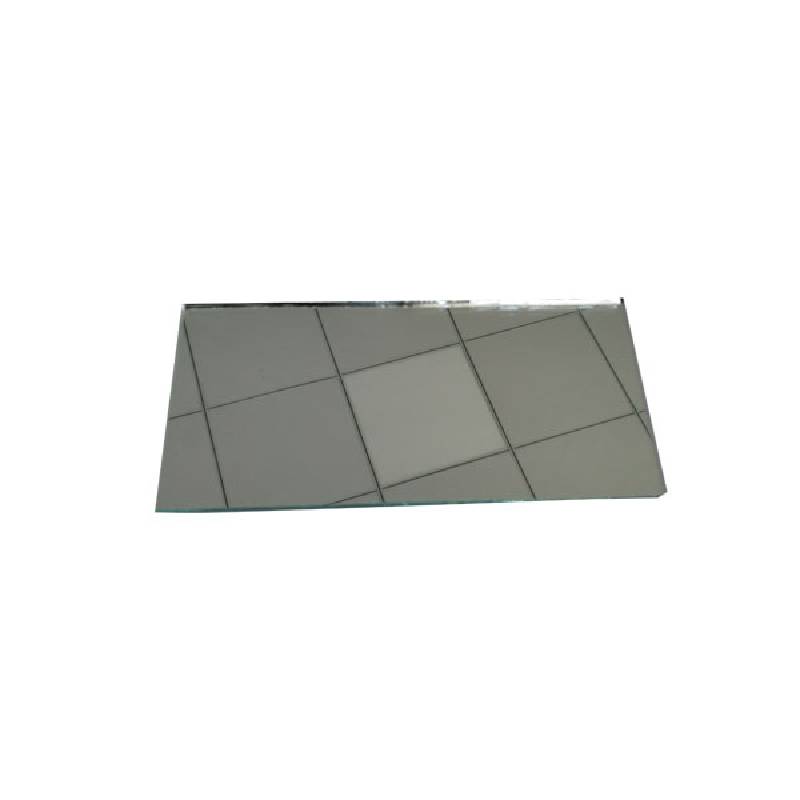The Use of Toughened Glass Benefits and Applications
Toughened glass, also known as tempered glass, is an innovative material that has transformed the construction and design industries. This type of glass is produced through a process of extreme heating and rapid cooling, which greatly increases its strength compared to standard glass. The use of toughened glass has surged in popularity due to its numerous advantages, making it a preferred choice for various applications.
One of the primary benefits of toughened glass is its safety. Unlike regular glass, which shatters into sharp shards, toughened glass breaks into small, blunt pieces, reducing the risk of injury. This characteristic makes it an ideal choice for public spaces, where safety is a paramount concern. Applications in schools, hospitals, and commercial buildings often feature toughened glass for doors, windows, and partitions to ensure the well-being of occupants.
Another significant advantage of toughened glass is its ability to withstand high impact. It is approximately five to six times stronger than standard glass of the same thickness. This durability allows for its use in high-stress environments, such as skyscrapers, where glass facades face extreme wind loads and thermal stresses. Additionally, toughened glass can endure sudden temperature changes, making it suitable for applications such as shower doors, glass floors, and even glass balustrades.
The aesthetic appeal of toughened glass cannot be overlooked. Its clarity and smooth finish provide a modern and sophisticated look to architectural designs. Architects and designers frequently incorporate toughened glass into their projects to create light-filled spaces that connect the indoor and outdoor environments. The ability to create large panes of glass without compromising safety or structural integrity has opened new avenues for innovative architectural designs.
use of toughened glass
Toughened glass is also energy efficient. Many toughened glass products are designed with thermal insulation properties, which help in regulating indoor temperatures. This insulation quality reduces the reliance on artificial heating and cooling systems, leading to lower energy bills and a reduced carbon footprint. As more individuals and businesses prioritize sustainability, toughened glass emerges as an eco-friendly choice for construction and renovation projects.
In terms of maintenance, toughened glass is relatively easy to clean and maintain. Its smooth surface repels dirt, making it a practical choice for both residential and commercial applications. This ease of upkeep contributes to the long-term value and appeal of structures that utilize toughened glass.
Moreover, toughened glass can be customized in various ways. It can be cut, shaped, and even coated with different finishes to meet specific design and functionality requirements. This versatility allows architects and builders to implement creative solutions tailored to the unique needs of their projects.
In conclusion, the use of toughened glass brings a wealth of benefits to modern construction and design. Its superior strength, safety features, aesthetic flexibility, energy efficiency, and ease of maintenance make it a favored material across various industries. As technology continues to evolve, the applications of toughened glass are likely to expand, solidifying its position as a cornerstone of contemporary architecture and design. Whether in residential buildings, commercial spaces, or public installations, toughened glass undoubtedly enhances both the functionality and beauty of our built environment.
 Afrikaans
Afrikaans  Albanian
Albanian  Amharic
Amharic  Arabic
Arabic  Armenian
Armenian  Azerbaijani
Azerbaijani  Basque
Basque  Belarusian
Belarusian  Bengali
Bengali  Bosnian
Bosnian  Bulgarian
Bulgarian  Catalan
Catalan  Cebuano
Cebuano  Corsican
Corsican  Croatian
Croatian  Czech
Czech  Danish
Danish  Dutch
Dutch  English
English  Esperanto
Esperanto  Estonian
Estonian  Finnish
Finnish  French
French  Frisian
Frisian  Galician
Galician  Georgian
Georgian  German
German  Greek
Greek  Gujarati
Gujarati  Haitian Creole
Haitian Creole  hausa
hausa  hawaiian
hawaiian  Hebrew
Hebrew  Hindi
Hindi  Miao
Miao  Hungarian
Hungarian  Icelandic
Icelandic  igbo
igbo  Indonesian
Indonesian  irish
irish  Italian
Italian  Japanese
Japanese  Javanese
Javanese  Kannada
Kannada  kazakh
kazakh  Khmer
Khmer  Rwandese
Rwandese  Korean
Korean  Kurdish
Kurdish  Kyrgyz
Kyrgyz  Lao
Lao  Latin
Latin  Latvian
Latvian  Lithuanian
Lithuanian  Luxembourgish
Luxembourgish  Macedonian
Macedonian  Malgashi
Malgashi  Malay
Malay  Malayalam
Malayalam  Maltese
Maltese  Maori
Maori  Marathi
Marathi  Mongolian
Mongolian  Myanmar
Myanmar  Nepali
Nepali  Norwegian
Norwegian  Norwegian
Norwegian  Occitan
Occitan  Pashto
Pashto  Persian
Persian  Polish
Polish  Portuguese
Portuguese  Punjabi
Punjabi  Romanian
Romanian  Russian
Russian  Samoan
Samoan  Scottish Gaelic
Scottish Gaelic  Serbian
Serbian  Sesotho
Sesotho  Shona
Shona  Sindhi
Sindhi  Sinhala
Sinhala  Slovak
Slovak  Slovenian
Slovenian  Somali
Somali  Spanish
Spanish  Sundanese
Sundanese  Swahili
Swahili  Swedish
Swedish  Tagalog
Tagalog  Tajik
Tajik  Tamil
Tamil  Tatar
Tatar  Telugu
Telugu  Thai
Thai  Turkish
Turkish  Turkmen
Turkmen  Ukrainian
Ukrainian  Urdu
Urdu  Uighur
Uighur  Uzbek
Uzbek  Vietnamese
Vietnamese  Welsh
Welsh  Bantu
Bantu  Yiddish
Yiddish  Yoruba
Yoruba  Zulu
Zulu 

